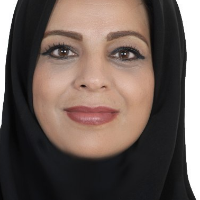Assessment of Cadmium, Lead and Nickel Removal Capacity of Lactic Acid Bacteria from Aqueous Solutions and Fresh Edible Vegetables
The food and water contamination with heavy metals is increasing due to the environmental pollutions. Heavy metals are the elements with the density of more than 5 g/cm3 and have become a serious problem as a result of the urbanization and industrialization. These toxic metals pollute water, soil, plants, and eventually foodstuffs and our bodies. Several methods exist to remediate heavy metal pollution in waters such as membrane filtration, ion exchange mechanisms, or by precipitation. Yet, these techniques are not cost effective, in some cases, and do produce wastes that need to be properly disposed of. Microbial bioremediation could be an alternative. The use of microbes for remediation of heavy metals has been well studied. Some microorganisms, especially soil bacteria, have the ability to tolerate these contaminants. In addition, certain bacterial strains are capable of binding to heavy metals or transforming them into less toxic forms. Low operating costs, usable in foodstuffs, selective removal for specific toxic metals, minimal use of chemicals (resulting in low sludge production) and high efficiencies at very low levels of heavy metals are some of the advantages of biosorption methods. In this regard, the purpose of this study was to investigate the ability of active and passive absorption of heavy metals by a number of Lactic Acid Bacteria (LAB) strains in laboratory environment and food.
Seven LAB isolates including Lacticaseibacillus casei (RTCC 1296-3), Lacticaseibacillus rhamnosus (RTCC 1293-2), Lactiplantibacillus plantarum (RTCC 1290), Limosilactobacillus fermentum (RTCC 1303), Enterococcus faecium (RTCC 2347), Lactobacillus helveticus (RTCC 1304) and Lactobacillus acidophilus (RTCC 1299) were obtained from Razi type culture collection (RTCC), located at Razi vaccine and Serum Research Institute, Iran. All isolates were cultured in MRS (Scharlau, Spain) broth medium, at 37 °C for 24 hours, under anaerobic conditions. Pure cultures were preserved for long term by freezing at -70°C with 20% Glycerol. Heavy metals including Nitrate of Pb (II), Cd (II) and Ni (II) were purchased from Merck (Darmstadt, Germany). All standard solutions were prepared from the stock solutions containing 1000 mgl-1 in distilled water. Other chemicals used in study including Nitric acid (65%) and Hydrogen peroxide (37%), were also purchased from Merck, Germany. This study was conducted in two in- vitro and in-vivo phases; in the in- vitro phase, seven strains of bacteria with probiotic properties (L. casei, L. rhamnosus, L. plantarum, L. fermentum, Ent. facium, L. helveticus and L. acidofilous) were screened and then their ability to bind to cadmium (Cd), Lead (Pb) and nickel (Ni) in aqueous solution was investigated. Then, in the in-vivo stage, three probiotic strains that had the highest biosorption efficiency in the previously stage were selected and their effect with a ratio of 1:1:1 and contact time of 15 and 30 minutes on the removal of these toxic metals in coriander, leek and parsley fresh vegetables was evaluated. The residual concentrations of heavy metals in solution were measured by Inductively Coupled Plasma Mass Spectrometer (ICP-MS; ELAN DRC-e, PerkinElmer SCIEX, Canada) and Morphology of bacteria cell surfaces incubated with metals were monitored by scanning electron microscopy (JEOL JSM 5400 LV, Japan).
The results of the in vitro stage showed that the most ability to heavy metals adsorption was related to the Ent. Facium bacterium which were equal to 79.75±0.11, 75.28±0.05 and 83.99±0.10% for Pb, Cd and Ni, respectively. In general, the removal efficiency of heavy metals by LAB bacteria in the inactive and killed state was significantly higher than the active removal efficiency of these bacteria, so that the highest percentage of passive absorption of lead, cadmium and nickel metals by inactive strains of L. casei, L. plantarum and Ent. Facium were 90.01, 81.98 and 86.56%, respectively. Electron microscopy observations and energy dispersive X-ray (EDX) analysis confirmed that the majority of these toxic metals significantly damage the surface of living cells by accumulating and binding on the surface of bacterial cells. A combination of three bacterial strains had a synergistic effect on the binding properties of toxic metals compared to the single state of these bacteria, so that in both active and inactive states, 90-99% of heavy metals from edible leafy vegetables were removed in less than 15 minutes. The results of this research generally showed that the binding capacity of dead biomass is significantly high and it is possible to dispose and reuse biomass in case of biological absorption.
Biosorption , edible vegetables , Heavy metals , LAB bacteria , SEM , EDX
- حق عضویت دریافتی صرف حمایت از نشریات عضو و نگهداری، تکمیل و توسعه مگیران میشود.
- پرداخت حق اشتراک و دانلود مقالات اجازه بازنشر آن در سایر رسانههای چاپی و دیجیتال را به کاربر نمیدهد.



